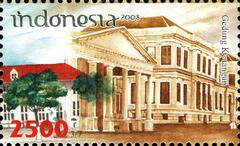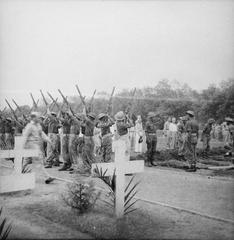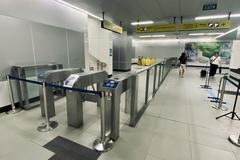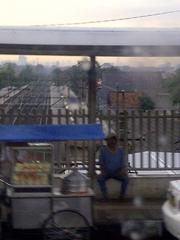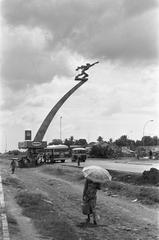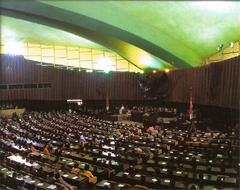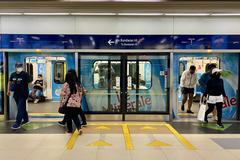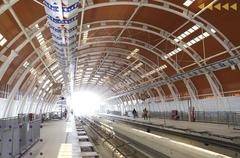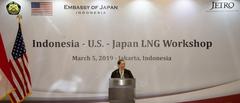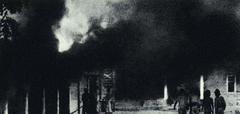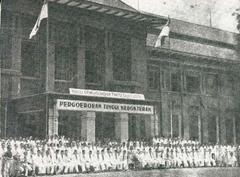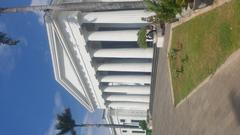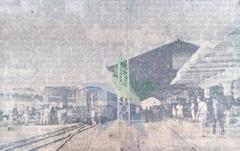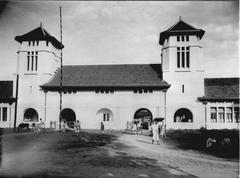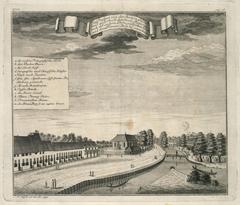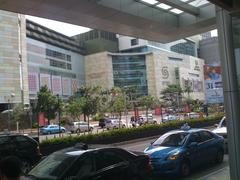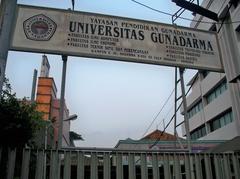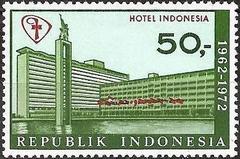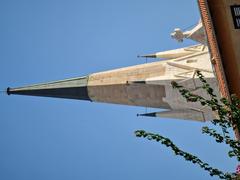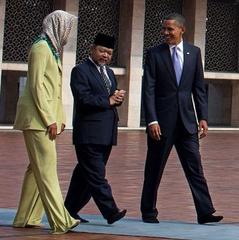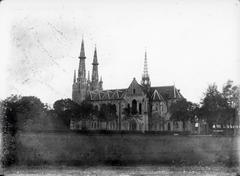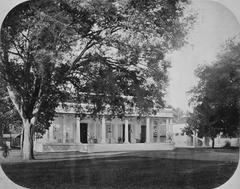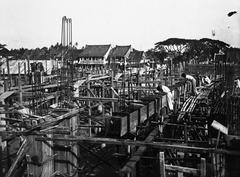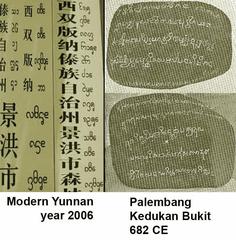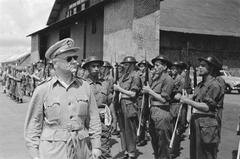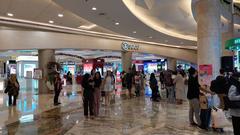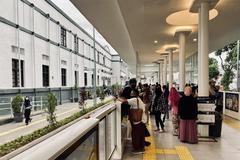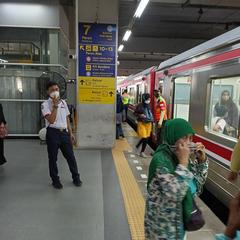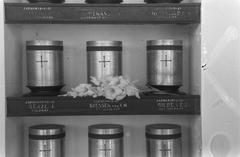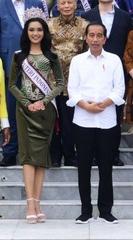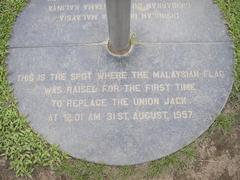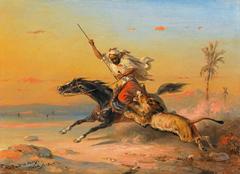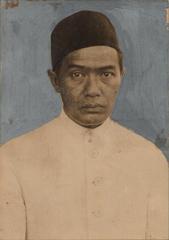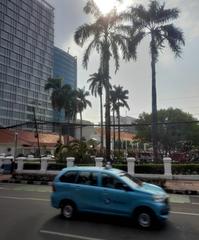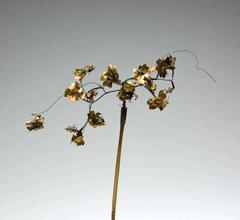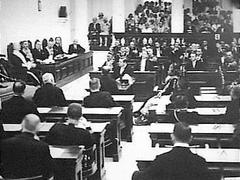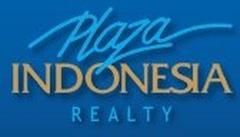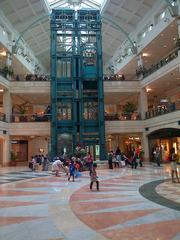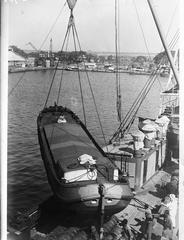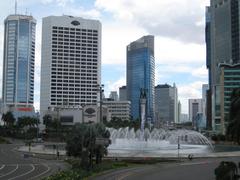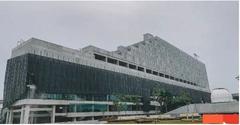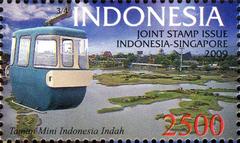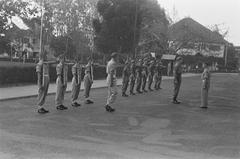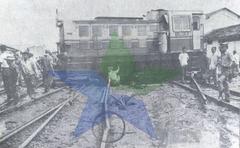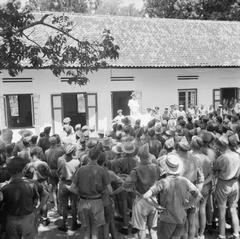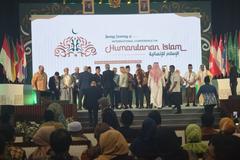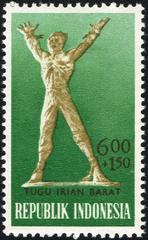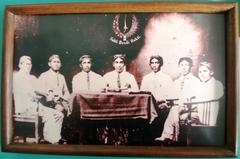Bank Mandiri Museum: Visiting Hours, Tickets, and Historical Landmarks in Jakarta
Date: 04/07/2025
Introduction
Nestled within Jakarta’s historic Kota Tua, the Bank Mandiri Museum stands as a testament to Indonesia’s rich financial history and colonial heritage. Originally constructed in 1929 and inaugurated in 1933 as the headquarters of the Nederlandsche Handel-Maatschappij (NHM), the museum’s grand Art Deco architecture, teak wood interiors, marble floors, and elaborate stained-glass windows transport visitors back to the era of Batavia’s bustling financial district (Exploresunda; Jakarta Old Town Tourism).
Following Indonesia’s independence, the building was nationalized and later became part of Bank Mandiri after the 1998–1999 merger of four state-owned banks—a pivotal moment in the nation’s financial evolution (Kompas). Established as a museum in 2004, it offers immersive exhibits, rare artifacts, and interactive experiences that chronicle Indonesia’s transition from colonial trade finance to modern economic sovereignty (Jawapos).
The museum is easily accessible via Jakarta Kota Station and TransJakarta, and its affordable admission caters to families, students, and history enthusiasts alike (Holidify; wisatarakyat.com). With engaging exhibitions—including immersive zones like “Fantasia”—the Bank Mandiri Museum bridges the past and present, offering a compelling window into Indonesia’s financial journey (lzy.co.id).
Table of Contents
- Colonial Origins and Early Banking in Indonesia
- Transition Through Independence and Nationalization
- Establishment of the Museum and Its Mission
- Notable Collections and Artifacts
- Thematic Exhibitions and Educational Initiatives
- Visitor Information
- Architectural Highlights
- Museum Collections & Thematic Exhibits
- Visitor Experience: Tours, Interactivity, Amenities
- Visitor Tips & FAQs
- Cultural Significance
- Comparative Perspectives
- Conclusion & Call to Action
- References
Colonial Origins and Early Banking in Indonesia
The museum’s building was originally established as the headquarters of the Nederlandsche Handel-Maatschappij (NHM), founded in 1824 to manage trade and banking following the VOC’s dissolution. This institution played a key role in the export of commodities such as sugar, coffee, nutmeg, and cloves (Kompas). The structure, built between 1929 and 1933, reflects Dutch colonial and Art Deco grandeur, with original teak furnishings, marble floors, and stained-glass accents (Exploresunda).
Transition Through Independence and Nationalization
After 1945, the NHM building was nationalized, mirroring Indonesia’s assertion of economic sovereignty. It subsequently became an important asset for Bank Mandiri, formed through a landmark 1998–1999 merger, and now stands as the largest state-owned bank in Indonesia (Kompas).
Establishment of the Museum and Its Mission
Officially opened in 2004, the Bank Mandiri Museum documents Indonesia’s banking evolution across four floors. Exhibits encompass rare artifacts, historic documents, photographs, and interactive displays, with preserved original spaces like teller booths and the “Kassier China” counter—showcasing the Chinese-Indonesian community’s role in Batavia’s commerce (Jawapos; Kompas).
Notable Collections and Artifacts
- Manual Calculating Machines and Typewriters: Pre-digital banking equipment illustrating historic operational methods (Jawapos).
- 5.5-Ton Steel Vault Door: A massive symbol of banking security (Kompas).
- Historic Ledgers: Forty-five large handwritten ledgers from the NHM era; one is displayed, the rest are preserved in the Bookhoeding archive (Exploresunda).
- Currency and Numismatics: Dutch gulden, colonial and independence-era notes, and contemporary rupiah (Jawapos).
- Traditional Terracotta Piggy Banks: Animal-shaped vessels reflecting Indonesia’s diverse savings traditions (Exploresunda).
- Stained Glass Artwork: Grand staircase window depicting the four Dutch seasons and Indonesian people (Exploresunda).
Thematic Exhibitions and Educational Initiatives
The museum hosts rotating exhibitions and educational programs delving into Indonesia’s economic history (Evendo). The immersive “Fantasia” zone leverages art and technology to create a multi-sensory experience, drawing families and young visitors (Jawapos; lzy.co.id).
Visitor Information
Visiting Hours & Ticket Prices
- Hours: Tuesday–Sunday, 9:00 AM–4:00 PM; closed Mondays and public holidays.
- Tickets: General admission IDR 10,000 for adults; students and children under 5 often free or discounted (travel.kompas.com).
- Special Exhibitions (e.g., Nawa Fantasia): May incur higher fees (lzy.co.id).
Getting There & Accessibility
- Location: Jl. Lapangan Stasiun No. 1, Kota Tua, Central Jakarta.
- Public Transit: Steps from Jakarta Kota Station; accessible via TransJakarta (Kota Tua stop).
- Accessibility: Wheelchair-friendly, but some historic areas have limited access (wisatarakyat.com).
Nearby Attractions
- Museum Bank Indonesia: 50 meters away, focusing on central banking history.
- Fatahillah Square: Cultural hub with Jakarta History Museum, Wayang Museum, and more (holidify.com).
Guided Tours & Photography
- Guided Tours: Available for groups by advance booking, in Indonesian and English.
- Photography: Non-flash photography permitted; popular spots include the stained-glass staircase and historic teller counters.
Architectural Highlights
Designed by Dutch architects J. van de Linde, F.J. de Bruyn, and C. van der Linde, the museum is an outstanding example of Dutch colonial Art Deco. Features include:
- Façade: Majestic entrances, symmetry, and geometric motifs.
- Interiors: High ceilings, imported marble floors, original glasswork, and robust vaults.
- Distinctive Spaces: Preserved cashier halls, executive offices, grand staircases, and “Brandkasts” (fireproof vaults) (Jakarta Old Town Tourism).
Museum Collections & Thematic Exhibits
Historical Banking Artifacts
- Teller Counters & Desks: Early 20th-century woodwork (ekaputrawisata.com).
- Antique Safes & Deposit Boxes: Ornate security from the colonial era (whatsnewindonesia.com).
- Mechanical Banking Machines: Calculators, money counters, printing presses, and seal presses (whatsnewindonesia.com).
- Historic ATMs: Illustrating technology’s evolution (wisatarakyat.com).
Currency and Numismatics
- Coins & Banknotes: From Dutch East Indies to early Indonesian independence (holidify.com).
- Financial Documents: Rare deposit slips, bonds, and stock certificates.
Archival Records and Photographs
- Ledgers & Documents: Original bookkeeping from various eras (ekaputrawisata.com).
- Historic Photos: Documenting the transformation of Jakarta’s financial district (wisatarakyat.com).
Thematic Rooms and Special Exhibits
- Ground Floor: Treasury, bookkeeping, Chinese cashier, bank equipment, and ATM rooms (holidify.com).
- First Floor: Meeting rooms, director’s dining room, numismatics room.
- Basement: “Jakarta Tempo Doeloe” with city history dioramas (wisatarakyat.com).
Visitor Experience: Tours, Interactivity, Amenities
- Guided Tours: In-depth for groups and educational visits; self-guided tours supported by clear signage (ekaputrawisata.com).
- Interactive Displays: Hands-on banking machines and multimedia presentations.
- Atmosphere: Elegant interiors, stained glass, and preserved details make for excellent photography (ekaputrawisata.com).
- Amenities: Clean restrooms, souvenir shop, and lockers; non-flash photography allowed.
Visitor Tips & FAQs
Tips
- Arrive early to avoid crowds, especially on weekends.
- Combine your visit with other Kota Tua museums for a comprehensive cultural itinerary.
- Check the museum’s website or social media for updates on special exhibitions.
Frequently Asked Questions
Q: What are the Bank Mandiri Museum opening hours?
A: Tuesday–Sunday, 9:00 AM–4:00 PM; closed Mondays and public holidays.
Q: How much are tickets?
A: General admission IDR 10,000; special exhibitions may have additional fees.
Q: Is the museum accessible?
A: Yes, but some historic areas may be challenging for those with mobility issues.
Q: Are guided tours available?
A: Yes, for groups and special events with advance booking.
Q: What are nearby attractions?
A: Bank Indonesia Museum, Fatahillah Square, Jakarta History Museum, Wayang Museum.
Cultural Significance
The Bank Mandiri Museum is more than a repository of financial artifacts—it’s a living chronicle of Indonesia’s journey from colonial subjugation to economic independence. The building’s preserved banking halls, vaults, and offices offer tangible insight into the colonial economic landscape and the complexities of post-independence financial development.
As part of Kota Tua’s vibrant cultural district, the museum regularly collaborates with artists, historians, and educators for temporary exhibitions, seminars, and cultural events, making it a vital hub for Jakarta’s heritage tourism (Travelspromo).
Comparative Perspectives
While both the Bank Mandiri Museum and Museum Bank Indonesia highlight Indonesia’s financial heritage, the former focuses on the operational and institutional transitions from colonial to post-colonial banking, while the latter covers a broader narrative including global currency and central banking (Holidify). Internationally, the Bank Mandiri Museum distinguishes itself with its architectural authenticity and deep integration into Jakarta’s urban heritage.
Conclusion & Call to Action
The Bank Mandiri Museum is an essential destination for anyone interested in Jakarta’s history, colonial architecture, or the evolution of Indonesia’s financial sector. With its prime location in Kota Tua, affordable entry, and engaging exhibits, it promises a rewarding visit for tourists, students, and history enthusiasts.
Plan your trip today:
- Check the latest visiting hours and ticket info on the official website.
- Download the Audiala app for travel tips and event updates.
- Follow the museum’s social media for news on exhibitions and cultural events.
- Combine your visit with other Kota Tua attractions for a full day of discovery.
References
- 8 Koleksi Museum Mandiri Jakarta Ada Pintu Brankas Seberat 5,5 Ton, 2024, Kompas (Kompas)
- Bank Mandiri Museum Jakarta: Visiting Hours, Tickets & Architectural Highlights, 2024, Jakarta Old Town Tourism (Jakarta Old Town Tourism)
- Harga Tiket Masuk 2025 dan Cara ke Museum Bank Mandiri di Kota Tua, 2025, Jawapos (Jawapos)
- Museum Bank Mandiri Jakarta: Exploring Jakarta’s Historical Banking Museum in Kota Tua, 2024, Ekaputrawisata (ekaputrawisata.com)
- Nawa Fantasia, Pengalaman Imersif Terbaru di Museum Mandiri Jakarta, 2024, LZY (lzy.co.id)
- Museum Mandiri Jakarta: Visiting Hours, Tickets, and Exploring Jakarta Historical Sites, 2024, Wisatarakyat (wisatarakyat.com)
- Museum Bank Indonesia Jakarta: History and Visiting Guide, 2024, Travelspromo (Travelspromo)
- Museum Bank Mandiri Jakarta Sightseeing, 2024, Holidify (Holidify)
- Ultimate Guide: 10 Must Visit Museums Jakarta, 2024, Whatsnewindonesia (whatsnewindonesia.com)
